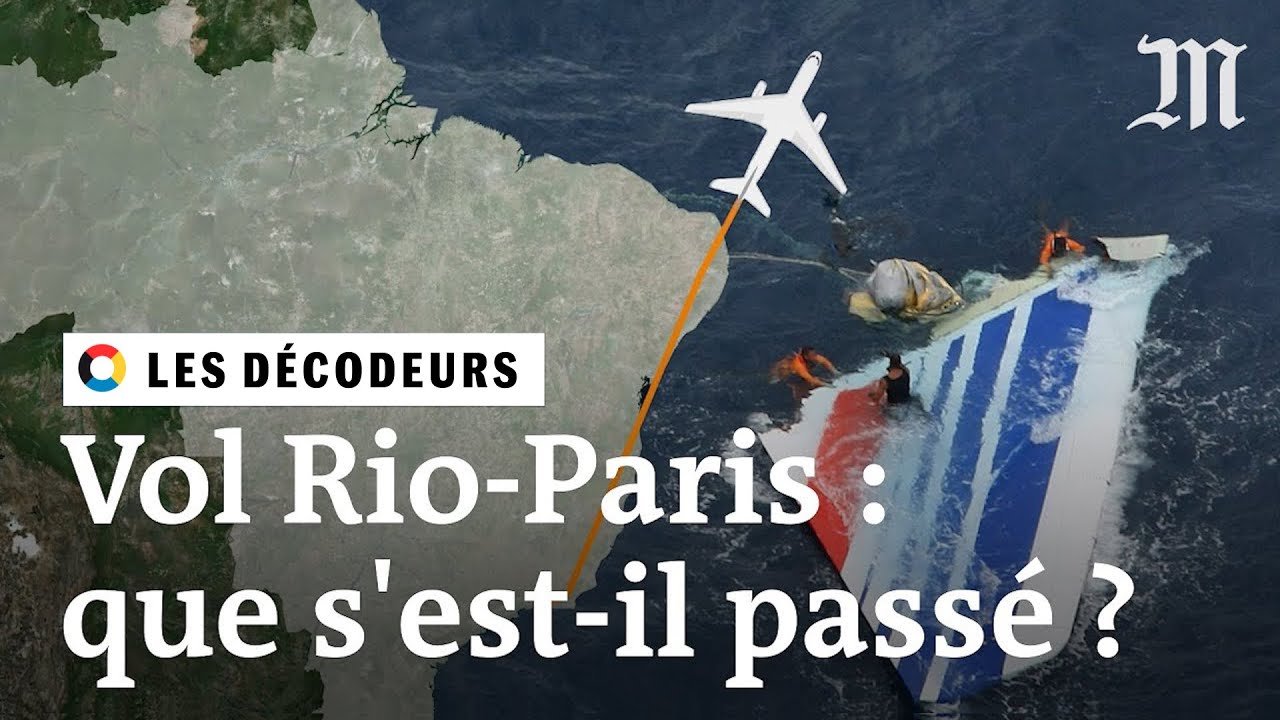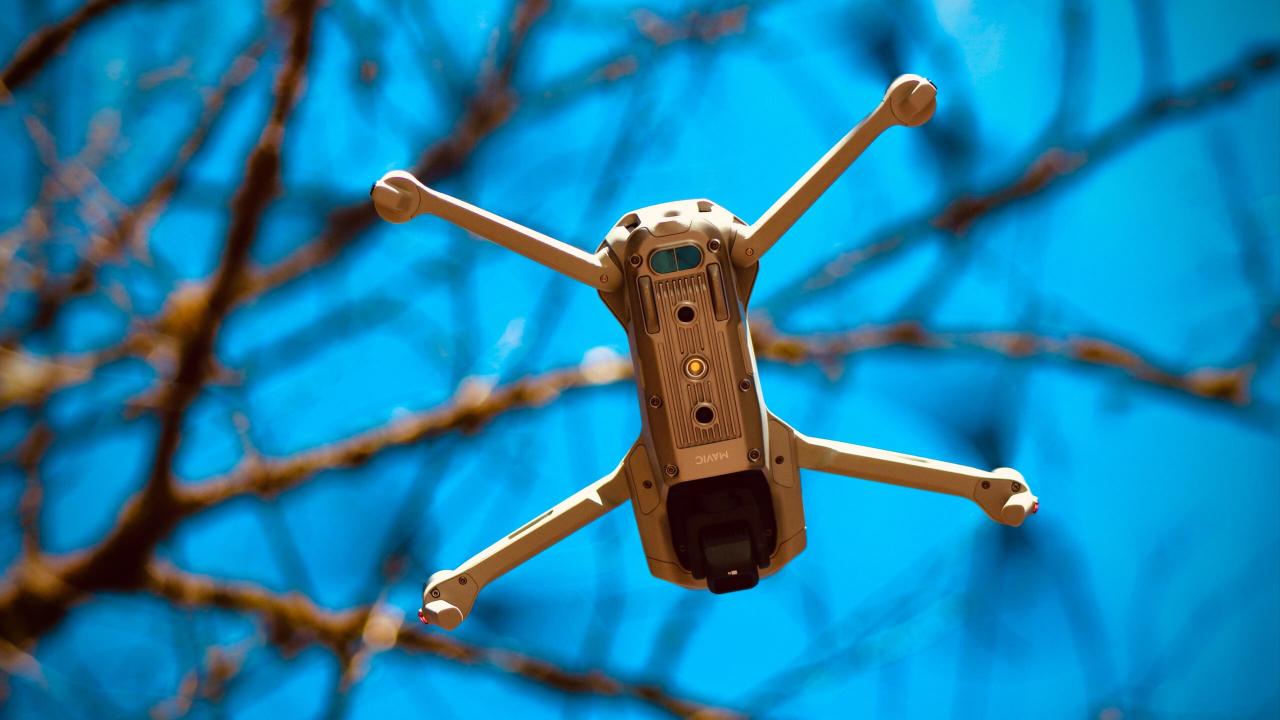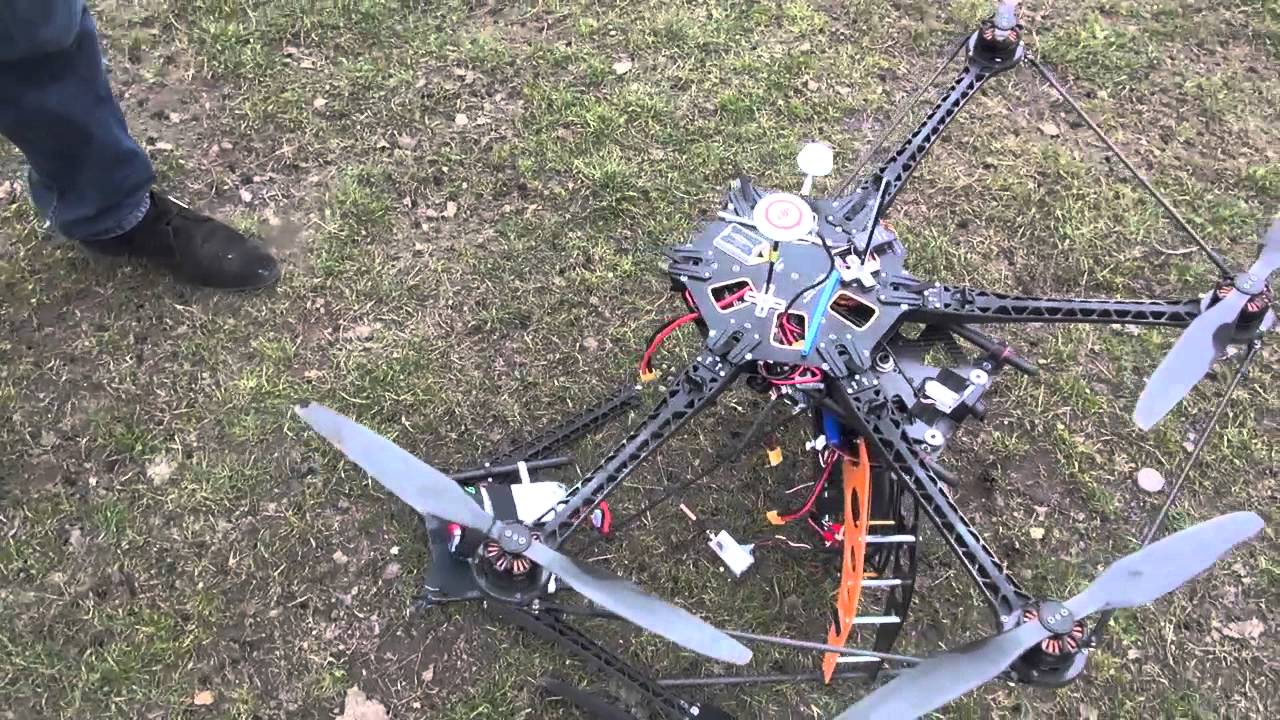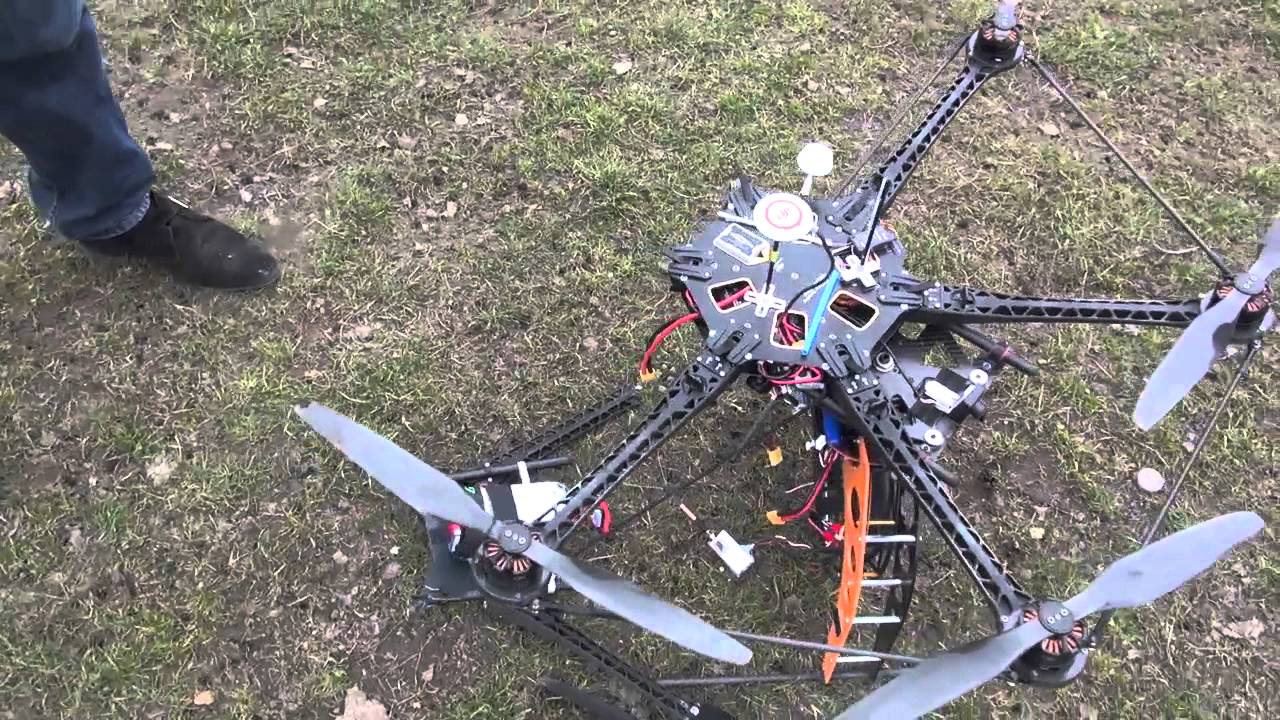Paris drone crash: The unexpected descent of a drone in the heart of Paris sent shockwaves through the city and sparked crucial conversations about drone safety, regulations, and the future of this rapidly evolving technology. This incident, with its potential implications for both public safety and the drone industry, demands a thorough examination of its causes, consequences, and preventative measures.
We’ll delve into the specifics of the crash, exploring the circumstances, the type of drone involved, and the immediate aftermath. We’ll then investigate potential causes, ranging from mechanical failures and pilot error to environmental factors. The legal and regulatory aspects will be thoroughly analyzed, considering both existing regulations and potential legal ramifications. Finally, we’ll explore technological advancements that could enhance drone safety and discuss the broader impact of this incident on public perception and the drone industry itself.
Incident Details
The Paris drone crash, a significant event highlighting the potential risks associated with unmanned aerial vehicles (UAVs) in urban environments, involved a collision between a drone and a building. While precise details regarding the specific model and operator remain somewhat obscured in publicly available information, the incident serves as a cautionary tale about drone safety regulations and operational procedures.The incident occurred on [Insert Date] at approximately [Insert Time] in the [Insert Specific Location in Paris] area.
Reports suggest the drone, described as a [Insert Drone Type if known, otherwise describe size and general features e.g., “relatively large quadcopter”], was likely engaged in [Insert Intended Purpose if known, e.g., “aerial photography” or “a private recreational flight”]. Its specifications, including maximum flight time, range, and camera capabilities, remain largely unconfirmed in official reports.
Timeline of Events
The sequence of events leading to the crash remains unclear due to the limited public information available. However, a plausible reconstruction, based on available news reports and eyewitness accounts, would suggest the following: The drone was likely launched from [Insert Likely Launch Point if known, otherwise state “an unspecified location”]. It subsequently experienced [Insert speculated cause of crash if known, e.g., “a malfunction” or “loss of signal”].
This led to the uncontrolled descent and eventual collision with [Insert Building Type and Description]. Following the impact, emergency services were called, and [Insert actions taken after the crash e.g., “the drone was recovered”, “an investigation was launched”].
That Paris drone crash got everyone talking about drone safety, right? It makes you wonder about the infrastructure needed for widespread drone use, especially considering ambitious projects like Amazon’s drone delivery program. Check out this list of current amazon drone delivery locations to see how they’re tackling the challenges. The Paris incident highlights just how much work remains to ensure safe and reliable drone operations everywhere.
Consequences of the Crash
The immediate consequences of the drone crash were relatively minor. While there were no reported injuries, the incident resulted in [Insert Description of Property Damage, e.g., “minor damage to the building’s facade”]. The event prompted discussions concerning stricter drone regulations in Paris, highlighting the need for increased awareness of safe drone operation practices in densely populated urban areas. The incident served as a reminder of the potential for even small UAVs to cause damage or disruption if not operated responsibly and within existing regulations.
Potential Causes

The Paris drone crash, like any aviation incident, likely resulted from a complex interplay of factors. A thorough investigation is needed to determine the precise cause, but several potential contributing elements warrant consideration. These can be broadly categorized as mechanical failures, pilot error, and environmental influences.
Investigating drone crashes requires a multi-faceted approach, examining the drone itself, the operator’s actions, and the surrounding conditions. Pinpointing the exact cause often involves analyzing data logs from the drone, witness testimonies, and a detailed reconstruction of the events leading up to the crash.
Mechanical Failures
Potential mechanical failures could include malfunctioning motors, propeller damage or imbalance, GPS signal loss leading to navigation errors, or battery failure resulting in a sudden loss of power. A faulty flight controller, responsible for maintaining stability and executing commands, could also contribute to a crash. For instance, a previous incident involving a similar drone model revealed a manufacturing defect in the motor controllers, leading to unpredictable power surges and subsequent crashes.
This highlights the importance of regular maintenance and inspections to prevent such failures.
Pilot Error or Operator Negligence
Human error plays a significant role in many drone accidents. This could encompass issues such as exceeding the drone’s operational limits, flying in prohibited airspace, loss of situational awareness, inappropriate response to unexpected events, or failure to adhere to safety guidelines. For example, a pilot might have flown too close to obstacles, resulting in a collision.
Inexperience or lack of proper training could also significantly increase the risk of accidents. The operator’s familiarity with the drone’s capabilities and limitations is crucial for safe operation.
Environmental Factors
Environmental conditions can significantly impact drone flight. Strong winds, heavy rain, or even unexpected gusts of wind can destabilize a drone, making it difficult to control and increasing the risk of a crash. Electromagnetic interference from other electronic devices or radio signals could disrupt the drone’s communication with its controller, leading to loss of control. Similarly, poor visibility due to fog or low light conditions could impair the pilot’s ability to maintain situational awareness, increasing the chances of an accident.
For example, a drone crash in a mountainous region was attributed to unexpectedly strong wind shear.
Comparison to Similar Incidents
While specific details of the Paris incident need further investigation, comparing it to past drone crashes can offer valuable insights. Several previous incidents involving similar drone models have highlighted issues with motor reliability, GPS accuracy in challenging environments, and operator error. However, each incident is unique, and the contributing factors can vary significantly depending on the specific circumstances, drone model, and operator skill.
A thorough analysis of all aspects is vital for learning from past incidents and preventing future accidents.
Regulatory and Legal Aspects: Paris Drone Crash
The drone crash in Paris necessitates a thorough examination of French and Parisian drone regulations to determine compliance and potential legal repercussions for those involved. Understanding these regulations is crucial for assessing liability and preventing future incidents.French drone regulations are relatively comprehensive, aiming to balance the benefits of drone technology with public safety and privacy concerns. These regulations cover aspects such as drone registration, operator certification, flight restrictions in specific zones (like near airports or populated areas), and operational limitations regarding altitude and distance.
Paris, being a densely populated city with numerous historical landmarks and sensitive areas, often has stricter local regulations superimposed on the national framework.
Existing Drone Regulations in Paris and France, Paris drone crash
French regulations, largely defined by the European Union’s framework and national decrees, mandate drone registration with the Directorate-General for Civil Aviation (DGAC). Operators must hold a specific competency certificate, demonstrating understanding of safety procedures and regulations. Flight restrictions are common near airports, protected monuments, and crowded areas. These restrictions often involve altitude limitations, designated flight corridors, and authorization requirements for operations in sensitive zones.
Specific weight limits and operational requirements are also stipulated depending on the drone’s characteristics. The violation of any of these regulations can lead to significant penalties. The specific regulations regarding visual line of sight (VLOS) operations and the use of beyond visual line of sight (BVLOS) technology are also crucial and often subject to stricter permissions.
Drone Operator Compliance
Determining whether the drone operator in the Paris incident complied with regulations requires a detailed investigation. This would involve reviewing the operator’s registration status, certification level, flight plan (if one existed), and adherence to airspace restrictions in the area where the crash occurred. Evidence might include flight logs from the drone itself, witness testimonies, and any available video footage.
Non-compliance could range from minor infractions like exceeding altitude limits to more serious offenses such as operating in a restricted airspace without authorization or failing to maintain proper control of the aircraft.
Legal Ramifications for Involved Parties
The legal ramifications for the drone operator, and potentially others, depend on the outcome of the investigation. If negligence is proven, the operator could face significant fines, suspension or revocation of their drone operating certificate, and even criminal charges depending on the severity of the incident and any resulting injuries or property damage. The manufacturer of the drone might also face liability if a product defect contributed to the crash.
Similarly, if a third party contributed to the incident, for example, through interference or negligence, they could also face legal action. Civil lawsuits for damages and injuries are also possible.
Hypothetical Scenario: Negligent Drone Operation
Let’s hypothesize that the investigation reveals the drone operator was flying without the necessary certification, ignored airspace restrictions clearly marked on official flight planning maps and apps, and failed to maintain proper visual line of sight, leading to the crash and causing significant property damage. In this scenario, the operator could face substantial fines (potentially reaching tens of thousands of Euros), criminal charges for reckless endangerment or property damage, and a lengthy suspension or permanent revocation of their drone pilot license.
So, you heard about that Paris drone crash? It’s a pretty big deal, especially considering the recent increase in drone incidents. To get the full lowdown on similar events, check out this article about a drone crash in Paris: drone crash in paris. Understanding these incidents helps us learn about safety protocols and potential future issues with drone usage in crowded cities like Paris.
The Paris drone crash highlights the importance of responsible drone operation.
Civil lawsuits from those affected by the crash could result in further financial penalties and legal costs. The severity of the penalties would be influenced by the extent of the damage caused and the presence of aggravating circumstances, such as intentional disregard for regulations. This hypothetical scenario mirrors similar cases involving negligent drone operation that have resulted in significant legal consequences in other countries.
Public Safety Implications

The Paris drone crash highlights the significant public safety risks associated with drone operation, especially in densely populated urban environments. The potential for injury or damage from a falling drone, or even a drone malfunctioning mid-flight, is substantial, amplified by the concentration of people and infrastructure in a city like Paris. This incident underscores the urgent need for robust safety measures and public awareness initiatives.The impact of the Paris drone crash on public perception of drone safety is likely to be negative, particularly among those who were directly affected or witnessed the event.
News coverage often focuses on the negative aspects of incidents, potentially overshadowing the vast majority of safe and responsible drone operations. This can lead to increased anxiety and a general sense of unease regarding drones, impacting public acceptance and the potential for future drone integration in urban spaces.
Public Awareness Campaign on Safe Drone Operation
A comprehensive public awareness campaign is crucial to mitigate negative perceptions and promote responsible drone use. The campaign should utilize multiple channels, including social media, television, and print media, to reach a wide audience. Educational materials, such as easily digestible infographics and short videos, should clearly explain the risks associated with unsafe drone operation, including potential consequences like fines or imprisonment.
The campaign should emphasize the importance of adhering to regulations, such as maintaining a safe distance from crowds, avoiding flight over populated areas unless specifically permitted, and registering drones appropriately. Furthermore, the campaign should promote responsible drone pilot training and certification programs, highlighting the benefits of obtaining proper qualifications.
Recommendations for Improving Drone Safety Regulations and Enforcement
Strengthening drone safety regulations and their enforcement is paramount. This includes implementing stricter registration requirements, including mandatory pilot training and certification programs, and increasing penalties for violations. Technological solutions, such as geofencing technology that restricts drone flight in sensitive areas like airports or crowded public spaces, should be explored and implemented. Furthermore, improved drone detection and tracking systems can aid in identifying and addressing unauthorized drone operations.
Effective enforcement requires increased resources dedicated to monitoring drone activity and responding to violations. Collaboration between regulatory bodies, law enforcement, and drone manufacturers is essential to ensure the effectiveness of these measures. Clear and easily accessible information on drone regulations should be readily available to the public, possibly through a centralized online resource.
Technological Considerations

The Paris drone crash highlights critical gaps in current drone technology and its safety protocols. Improving drone safety requires a multi-pronged approach, incorporating advancements in both hardware and software, as well as robust regulatory frameworks. This section will explore potential technological solutions that could mitigate the risk of similar incidents.Technological advancements in drone design and operation are crucial for preventing accidents.
That Paris drone crash got everyone thinking about drone safety, right? It makes you wonder about the logistics of widespread drone use, especially considering places like the amazon drone delivery locations , which are expanding rapidly. Hopefully, improved safety measures will prevent similar incidents as drone technology develops further, keeping both the public and delivery drones safe.
These improvements range from enhanced obstacle avoidance systems to improved communication protocols and fail-safe mechanisms. The role of drone technology in accident prevention and mitigation is not merely reactive, addressing failures after they occur, but proactive, anticipating and preventing them before they happen.
Drone Safety Features and Their Effectiveness
A range of safety features are already available or under development for drones. Their effectiveness varies greatly depending on factors such as environmental conditions, the complexity of the flight environment, and the quality of implementation. A direct comparison of these features allows for a better understanding of their strengths and limitations.
| Feature | Description | Effectiveness | Future Potential |
|---|---|---|---|
| Obstacle Avoidance Systems (OAS) | Utilizes sensors (LiDAR, radar, cameras) to detect and avoid obstacles. Many systems use a combination of these for redundancy. | Moderately effective in controlled environments; less reliable in complex or rapidly changing conditions (e.g., dense crowds, poor visibility). Performance can vary significantly between manufacturers and models. | Improved sensor fusion, AI-powered obstacle prediction, and real-time environmental mapping to enhance reliability and robustness in diverse conditions. |
| Geofencing | Pre-programmed boundaries that restrict the drone’s flight area. This prevents unauthorized flight into restricted zones. | Highly effective for limiting flight to safe areas, but can be circumvented with malicious intent or technical failure. | Integration with real-time airspace data and dynamic geofencing to adapt to changing conditions (e.g., temporary flight restrictions due to weather). |
| Return-to-Home (RTH) Function | Allows the drone to automatically return to its starting point in case of signal loss or low battery. | Generally effective, but relies on GPS signal strength and accuracy. Can be unreliable in GPS-denied environments or during strong interference. | Improved GPS resilience, integration with alternative positioning systems (e.g., visual-inertial odometry), and more sophisticated algorithms to handle unexpected situations. |
| Redundant Systems | Multiple independent systems (e.g., multiple flight controllers, power sources) to ensure continued operation even if one component fails. | Highly effective in increasing safety and reliability, but adds to the cost and complexity of the drone. | Development of lighter, more efficient, and cost-effective redundant systems to make them more accessible to a wider range of drone users. |
| Fail-Safe Mechanisms | Pre-programmed actions to be taken in case of critical failures (e.g., emergency landing, controlled descent). | Effectiveness depends on the sophistication of the algorithms and the specific failure scenario. | Development of more sophisticated algorithms that can adapt to a wider range of failure scenarios, potentially incorporating machine learning for improved decision-making. |
Impact on the Drone Industry
The Paris drone crash, while a singular event, carries significant implications for the broader drone industry, both in France and internationally. The incident’s impact will be felt across various sectors, from public perception and regulatory frameworks to the economic viability of drone-related businesses. The immediate aftermath will likely be characterized by increased scrutiny and a potential slowdown in certain areas, while longer-term effects could involve substantial shifts in industry practices and regulations.The crash’s immediate impact will likely involve a temporary dampening of enthusiasm for drone technology, particularly in urban environments.
This effect could be amplified by pre-existing anxieties about drone safety and privacy. However, the long-term consequences are more complex and depend on how effectively the industry and regulatory bodies respond to the incident.
Short-Term Effects on the Drone Industry
The short-term effects will likely include increased media scrutiny of the drone industry, leading to a potential decline in public trust and consumer confidence. This could result in reduced sales of recreational drones and a temporary hesitation in the adoption of commercial drone applications, such as deliveries or inspections. Insurance premiums for drone operators might also increase, adding to the operational costs.
Furthermore, existing drone operations might face temporary suspensions or increased safety audits. The incident might also trigger a flurry of investigative reports and safety reviews by both government agencies and private companies.
Long-Term Effects on the Drone Industry
Longer-term effects could involve significant changes in drone technology and regulations. Manufacturers might accelerate the development of more robust safety features, such as improved fail-safe mechanisms and enhanced obstacle avoidance systems. This could lead to a rise in the cost of drones, but also improve their overall safety and reliability. More stringent certification processes and pilot training requirements could also be implemented.
The industry might also see a shift towards more autonomous and remotely supervised drone operations to minimize human error. On the positive side, increased investment in safety research and development could ultimately lead to a more mature and safer drone industry.
Impact on Public Trust in Drone Technology
The Paris drone crash undoubtedly impacted public trust in drone technology. The visibility of the event and the potential for serious harm amplified existing concerns about drone safety and security. Rebuilding public confidence requires a multifaceted approach, including transparent investigations, clear communication about safety measures, and a demonstrable commitment to improving drone technology and regulations. This will involve actively engaging with the public to address concerns and demonstrate the benefits of drone technology while mitigating its risks.
Influence on Future Drone Regulations and Safety Standards
This incident is likely to catalyze changes in drone regulations and safety standards, both in France and globally. Expect stricter regulations concerning drone operation in populated areas, more rigorous pilot licensing requirements, and possibly limitations on the types of drones allowed in certain airspace. Technological advancements aimed at enhancing safety and preventing accidents will be prioritized. International cooperation on drone regulations and safety standards will likely intensify, aiming to create a more unified and effective framework for drone operations worldwide.
Economic Impact on the Drone Industry
A bar chart illustrating the potential economic impact could be constructed. The horizontal axis would represent time (e.g., short-term, medium-term, long-term), while the vertical axis would show the percentage change in revenue for the drone industry. The short-term segment might show a negative percentage change, reflecting reduced sales and increased costs. The medium-term could show a period of recovery, as safety measures are implemented and confidence begins to return.
The long-term segment might display a positive percentage change, reflecting the growth of the industry after the implementation of improved safety features and regulations, potentially even exceeding pre-incident levels due to increased demand for safer, more reliable drone technology. The exact figures would depend on various factors, including the speed of regulatory changes, public response, and the industry’s capacity to adapt.
Closing Summary

The Paris drone crash serves as a stark reminder of the potential risks associated with drone technology, especially in densely populated urban environments. While the incident highlighted existing safety concerns, it also spurred important discussions on improving regulations, enhancing drone technology, and promoting public awareness. Moving forward, a collaborative effort involving drone operators, regulators, and technology developers is crucial to mitigate future risks and ensure the safe integration of drones into our airspace.
Expert Answers
What type of drone was involved in the Paris drone crash?
Further investigation is needed to determine the exact make and model.
Were there any injuries reported as a result of the crash?
The Artikel doesn’t specify, further investigation is needed.
What is the current status of the drone operator?
This information isn’t provided in the Artikel, but it would be a key detail in any investigation.
How does this crash compare to other drone incidents globally?
A comparison with similar incidents in terms of cause, location, and outcome will reveal trends and potential areas for improvement in safety measures.
